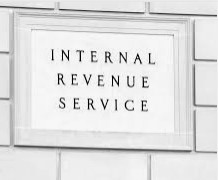 President Barack Obama and House Ways and Means Committee Chairman Dave Camp, R-Mich., both seek a revenue-neutral corporate tax rate reduction. Senate Finance Committee Chair Max Baucus, D-Mont., and Ranking Member Orrin Hatch, R-Utah, have proposed a “blank slate” approach, inviting anyone to tell them why any of the existing 200+ tax breaks should remain in a reformed tax system (6/27/13 press release). These leaders, along with many lawmakers, have lists of tax reforms for both individuals and businesses. A big question, though, is whether anything will really happen. This article describes seven signs or indicators that tax reform may indeed occur in 2014 before the end of the 113th Congress.
President Barack Obama and House Ways and Means Committee Chairman Dave Camp, R-Mich., both seek a revenue-neutral corporate tax rate reduction. Senate Finance Committee Chair Max Baucus, D-Mont., and Ranking Member Orrin Hatch, R-Utah, have proposed a “blank slate” approach, inviting anyone to tell them why any of the existing 200+ tax breaks should remain in a reformed tax system (6/27/13 press release). These leaders, along with many lawmakers, have lists of tax reforms for both individuals and businesses. A big question, though, is whether anything will really happen. This article describes seven signs or indicators that tax reform may indeed occur in 2014 before the end of the 113th Congress.
1. H.R. 1
H.R. 1 is reserved for tax reform legislation per a February 2013 announcement by House Speaker John Boehner, R-Ohio. The House Ways and Means Committee described this action as “signifying the importance tax reform holds for House Republicans” (House Ways and Means Committee news release, “Tax Reform Gets the Green Light” (2/26/13)).
2. More Than Fifty Hearings Held
At the start of the 112th Congress in January 2011, Camp held what he described as the “first in a series of hearings on fundamental tax reform.” He stated that the hearing was the “beginning of a dialogue that the president and the Congress—both Republicans and Democrats—must have with the American people about broad-based tax reform that will allow families to thrive and employers to create jobs.” Since that first hearing, more than 50 hearings have been held by the House Ways and Means and Senate Finance committees (see author’s website with links to tax reform hearings of the 112th and 113th Congresses).
The hearings have covered many topics, including lessons learned from the Tax Reform Act of 1986, P.L. 99-514, complexity, small business, international taxation, residential real estate, charitable contributions, innovation, manufacturing, financial products, energy, and retirement savings.
3. Camp Legislative Proposals
Camp has drafted legislative language covering the following areas (details available at House Ways and Means Committee’s Comprehensive Tax Reform website):
• International tax (moving to a territorial tax system) (2011);
• Financial products (2013); and
• Small business (2013).
The existence of legislative language allows for more focused discussion than is possible with general statements or frameworks, such as a goal to simplify the Code or help small businesses. With the release of the territorial tax system proposal, Camp also stated his goal for comprehensive tax reform to lower the top tax rates to 25% for both corporations and individuals.
4. Working Groups And Option Papers
In February 2013, the House Ways and Means Committee formed 11 working groups to examine specific areas for tax reform. Each group has a Republican chair and Democrat vice chair. The topic areas covered are:
• Charitable/exempt organizations;
• Debt, equity, and capital;
• Education and family benefits;
• Energy;
• Financial services;
• Income and tax distribution;
• International;
• Manufacturing;
• Pensions/retirement;
• Real estate; and
• Small business/passthroughs.
As part of this activity, the Joint Committee on Taxation prepared a 500+ page report with the ideas compiled by the working groups along with background on current law (Report to the House Committee on Ways and Means on Present Law and Suggestions for Reform Submitted to the Tax Reform Working Groups (JCS-3-13) (May 6, 2013);
In March 2013, the Senate Finance Committee began gathering reform ideas within 10 key areas. The results for each area were issued as “option papers” that present a “whole host of ideas … from across the spectrum,” even if they were not endorsed by Baucus or Hatch. These papers, which were released between March 21 and June 20, cover the following topics:
• Simplifying the tax system for families and businesses;
• Business investment and innovation;
• Family, education, and opportunities;
• Infrastructure, energy, and natural resources;
• International competitiveness;
• Economic and community development;
• Economic security;
• Types of income and business entities;
• Tax-exempt organizations and charitable giving; and
• Non–income tax issues and related reforms.
The ideas the working groups and option papers generated provide the tax committees with a wide range of reform options for further evaluation.
5. Leadership Changes After 2014
The leaders of the congressional tax committees—Camp and Baucus—presently occupy leadership positions in Congress ideal to lead tax reform efforts and clearly are devoted to the task, based on the work described above. In April 2013, Baucus announced that he will not seek re-election in 2014 (press release of 4/23/13). House rules allow a member to serve as chair or ranking member of a committee for only three terms of Congress; Camp’s chairmanship thus must end with the 113th Congress in late 2014 (Rules of the House of Representatives, Section 5(c)(2), page 12).
In a March 2013 letter to Budget Committee Chairman Paul Ryan, R-Wis., Republicans of the House Ways and Means Committee stated: “Our ultimate goal remains enactment of comprehensive tax reform during fiscal year 2014” (letter of 5/6/13).
6. Ideas For Compromise
Comprehensive tax reform is a significant task. Major changes will be needed to lower the tax rates in a revenue-neutral manner. Party differences exist in many areas, including whether tax reform should also generate revenue for deficit reduction (see Nellen, “Budget Proposals and the Tax System,” Tax Insider (4/11/13)). Thus, there will need to be room for compromise. There will also need to be options for revenue raisers to cover the cost of lowered rates.
Many options are on the table, including proposals from parties who will need to be part of any compromise. Here are some of the sources for ideas on compromise legislation:
• President Obama’s FY2014 General Explanations of the Administration’s Revenue Proposals (Greenbook).
• The final report of the bipartisan National Commission on Fiscal Responsibility and Reform, otherwise known as the Simpson-Bowles plan or deficit commission, which the president formed in 2010. While the final report did not get enough votes to move to Congress, it did receive bipartisan support. In addition, the co-chairs have continued to promote the plan as well as modify it (see Moment of Truth Project). The report calls attention to the $1.1 trillion of tax expenditures and how reducing them can lower tax rates.
• Sen. Tom Coburn, R-Okla., gave a comprehensive list of possible tax expenditures to cut, detailed in his report, Back in Black: A Deficit Reduction Plan (July 2011). This plan may be one tool for compromise because it presents ideas for deficit reduction from a notable Republican who was part of the “Gang of Six” senators who proposed solutions to the debt crisis in 2011 and the deficit commission.
• International tax reform activities: In early 2013, the Organisation for Economic Co-operation and Development (OECD) released a report, Base Erosion and Profit Shifting. These international tax-reform issues were endorsed by OECD countries (including the United States) in May 2013 (see Declaration on Base Erosion and Profit Shifting). In June 2013, the G8 countries signed the Lough Erne Declaration, which includes the following statement: “Countries should change rules that let companies shift their profits across borders to avoid taxes, and multinationals should report to tax authorities what tax they pay where.”
7. Road Trip
In June 2013, Camp and Baucus announced they would hit the road this summer to gather ideas and support for tax reform (see Snell, “Tax reform talks hit the road,” Politico (6/14/13)).
Looking Forward
Despite at least seven signs that comprehensive tax reform is likely by the end of 2014, there are also signs of obstacles, including finding reforms that will generate the revenue needed to lower rates and move from a worldwide to a territorial tax system. Another obstacle will be reaching compromise on whether reform should also generate revenue for deficit reduction. Let’s see what happens.




















Recent Comments